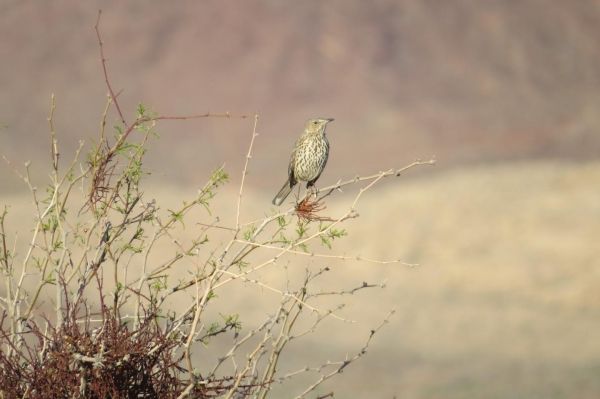In the arid Mojave Desert, small burrowing mammals like the cactus mouse, the kangaroo rat and the white-tailed antelope squirrel are weathering the hotter, drier conditions triggered by climate change much better than their winged counterparts, finds a new study published today in Science.
Over the past century, climate change has continuously nudged the Mojave’s searing summer temperatures ever higher, and the blazing heat has taken its toll on the desert’s birds. Researchers have documented a collapse in the region’s bird populations, likely resulting from many bird species’ inability to withstand these new hotter temperatures
However, the same team that documented the birds’ decline has now found that small mammal populations in the desert have remained relatively stable since the beginning of the 20th century.
A Cactus Mouse sticks its head out of a rock crevice. (Jack Daynes photo)
Using computer models to simulate how birds and mammals respond to heat, the study team showed that small mammals’ resilience is likely due to their ability to escape the sun in underground burrows and their tendency to be more active at night. As a result of these behaviors, small mammals have much lower “cooling costs” than birds, which have less capacity to escape the desert heat and need extra water to maintain a healthy body temperature.
Read more at University of California - Berkeley
Image: A sage thrasher perches on a shrub near Kelleys Well in Inyo County, California. The Mojave Desert's bird populations have been hit hard by climate change, but a new study shows that its small mammal populations are stable. Physiological modeling indicates that small mammals have much lower "cooling costs" than birds because of their ability to escape the sun in underground burrows, protecting them from the warming effect of climate change. (Credit: Chelsea Hofmeier photo)


